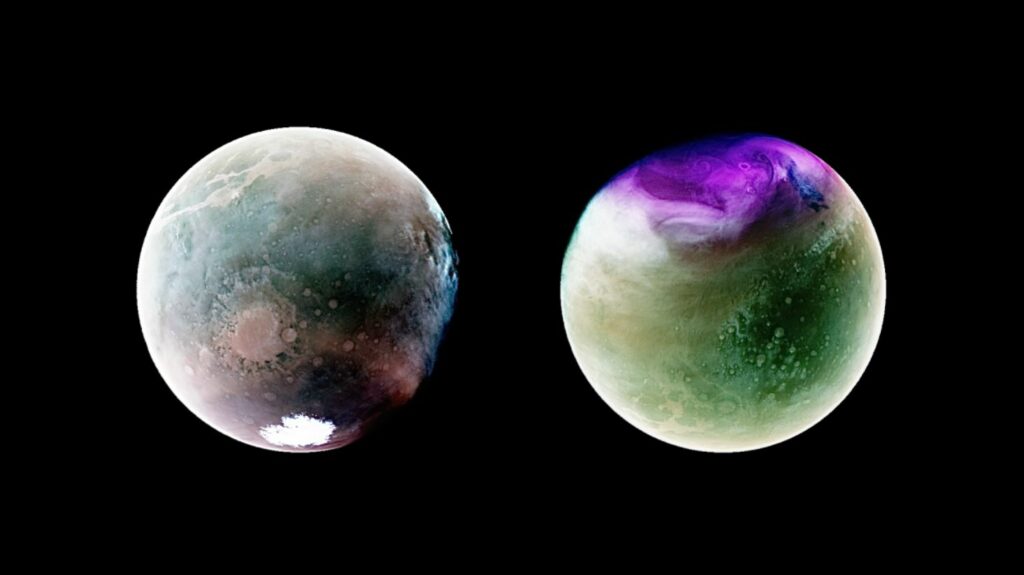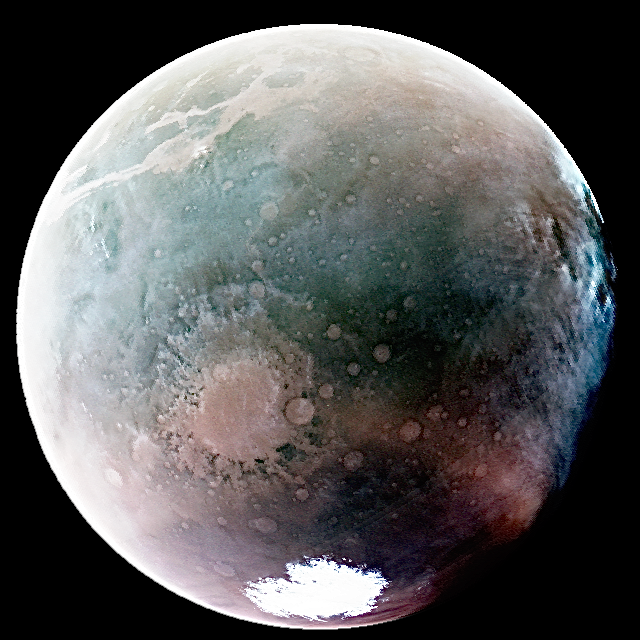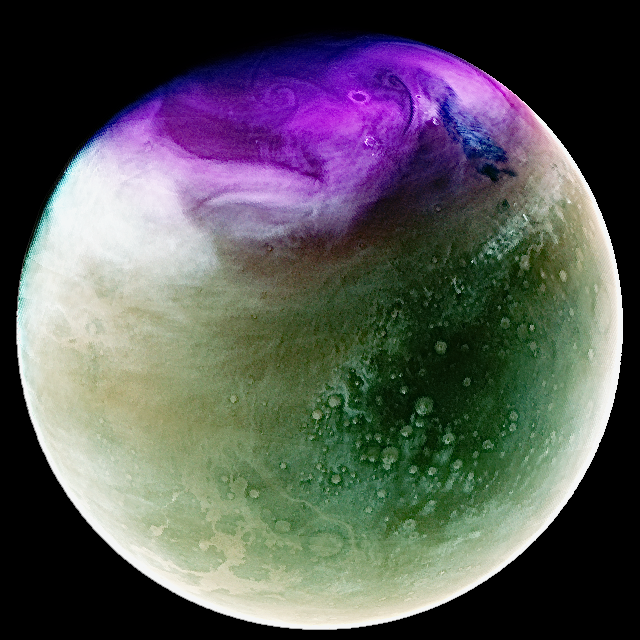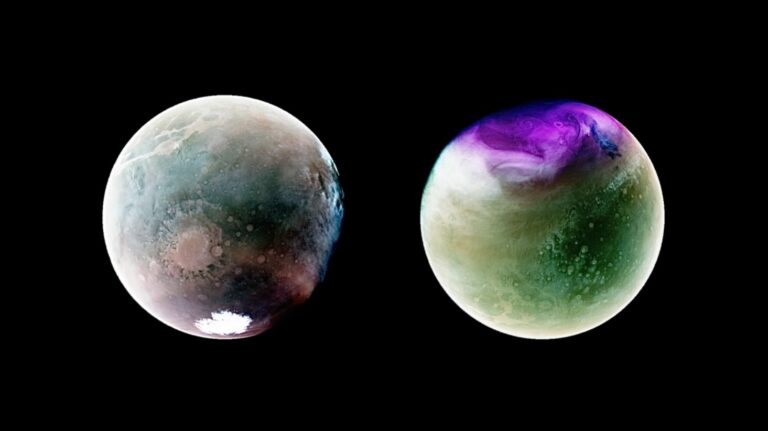Unprecedented Glimpse of Mars: NASA’s Stunning Ultraviolet Photos Reveal the Red Planet’s Beauty
Astounding Ultraviolet Views of Mars Showcase its Dynamic Seasonal Changes
Incredible ultraviolet photographs of Mars provide captivating glimpses into the planet’s ever-evolving seasons. Utilizing NASA’s Mars Atmosphere and Volatile EvolutioN (MAVEN) spacecraft, astronomers captured images in July 2022 during the southern hemisphere’s summer, when Mars was closest to the sun. They also photographed the planet in January 2023 after the northern hemisphere had reached the farthest point in its orbit from the sun.
MAVEN’s Imaging Ultraviolet Spectrograph (IUVS) instrument detected wavelengths ranging from 110 to 340 nanometers, outside the visible spectrum. In the photos, purple areas correspond to ozone in Mars’ atmosphere, while white and blue regions represent clouds or haze in the Martian sky. The planet’s surface appears tan or green in these striking new images.

“By observing the planet in ultraviolet wavelengths, scientists can gain valuable insights into the Martian atmosphere and visualize surface features in extraordinary ways,” stated NASA officials in a recent announcement.
Shared by NASA on June 22, the photographs were captured when Mars was near opposing ends of its orbit around the sun, showcasing the planet’s swiftly transitioning seasons. Similar to Earth, Mars experiences four distinct seasons due to its tilted axis. However, Mars’ seasons are roughly twice as long as Earth’s due to the Martian year being almost twice as long.
During the southern hemisphere’s summer, when Mars is closest to the sun, temperatures soar, leading to increased turbulence, stronger winds, and larger dust storms. In contrast, during the northern summer when Mars is further away from the sun, temperatures are comparatively cooler.

The first image, taken in July 2022, highlights Argyre Basin, one of Mars’ deepest craters located near the bottom left of the planet. The crater appears filled with atmospheric haze, while the deep canyons of Valles Marineris near the top left exhibit cloud-filled formations.
The summer heat causes the southern polar ice caps to shrink, resulting in the release of carbon dioxide and the thickening of the atmosphere. MAVEN, launched in November 2013 to study Mars’ atmospheric gases, has also observed increased hydrogen loss during this period, likely due to dust storms driving water vapor to high altitudes.
Examining these systems provides valuable insights into the evolution of the Red Planet. “Understanding atmospheric loss gives scientists insight into the history of Mars’ atmosphere and climate, liquid water, and planetary habitability,” noted NASA officials.

The second image, taken in January 2023, showcases Mars’ northern hemisphere after reaching the farthest point in its orbit, featuring an abundance of white clouds in the north polar region. Additionally, a magenta-colored accumulation of ozone is visible at the planet’s top, formed during the chilly polar nights of the northern winter. However, this patch of ozone will likely dissipate with the increase in water vapor during the springtime.
NASA’s MAVEN mission is set to celebrate its 10-year anniversary this fall, having entered Mars’ orbit in September 2014.
Do not forget to share your opinion with us to provide you with the best posts !




0 Comments